| View previous topic :: View next topic |
| Author |
Message |
Roger Warin

Joined: 23 Jan 2013
Posts: 1246



|
 Posted: Dec 23, 2016 00:57 Post subject: Cristobalite in Lybian Desert Glass Posted: Dec 23, 2016 00:57 Post subject: Cristobalite in Lybian Desert Glass |
|
|
Cristobalite in Libyan Desert Glass.
A terrestrial mineral in a terrestrial environment. Isn’t it?
| Mineral: | Cristobalite |
| Locality: | | Egypt |  |
|
| Description: |
| Alignment of the cristobalite crystals within the lamellae results in birefringence producing a variety of patterns, including Maltese cross, when spherulites are viewed between crossed polarizers in an optical microscope.It is not possible to see the fibro-radiated cristobalite crystals but the Maltese cross proves their texture. The size of the spherule is a bit large to have a well-defined Maltese cross in this slide.It would be interesting to correlate this texture of cristobalite with the temperature. I do not know the origin of the Libyan glass, but the thermal shock should not have been produced by a meteorite impact. |
|
| Viewed: |
15047 Time(s) |
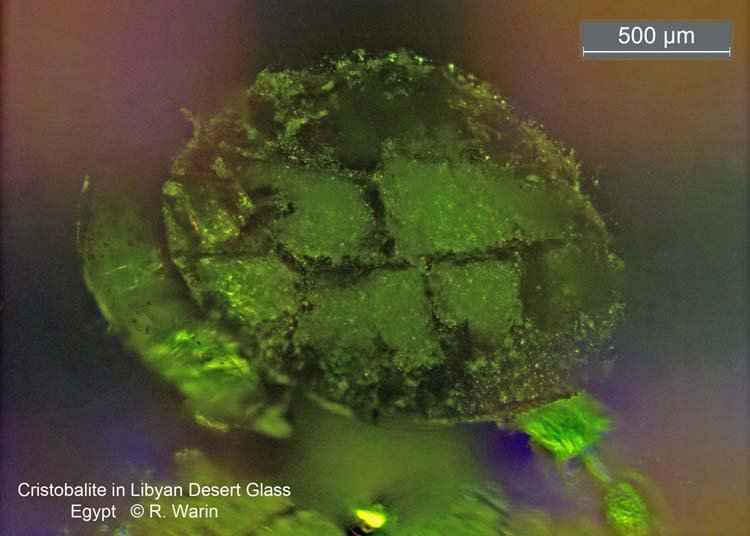
|
| Mineral: | Cristobalite |
| Locality: | | Egypt |  |
|
| Description: |
| Cristobalite spherulites in Lybian Desert Glass |
|
| Viewed: |
14998 Time(s) |
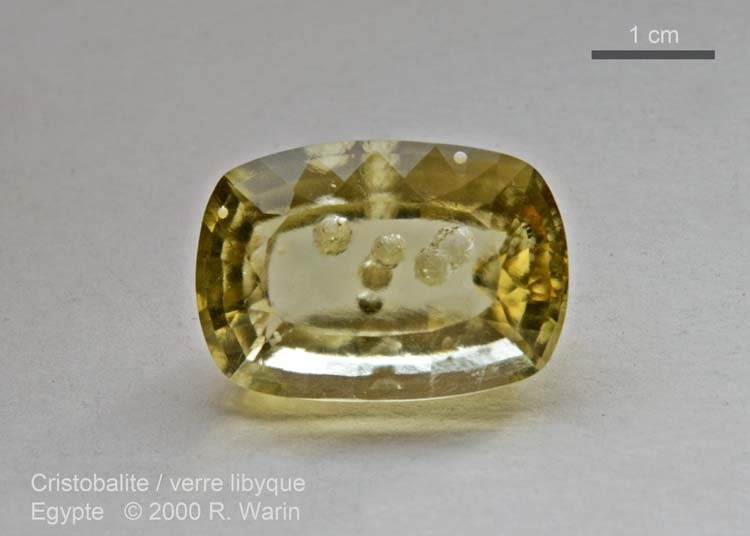
|
|
|
| Back to top |
|
 |
marco campos-venuti

Joined: 09 Apr 2014
Posts: 234
Location: Sevilla



|
 Posted: Dec 23, 2016 04:12 Post subject: Re: Cristobalite in Lybian Desert Glass Posted: Dec 23, 2016 04:12 Post subject: Re: Cristobalite in Lybian Desert Glass |
|
|
Exact!
Hi, here few slides I made for a presentation, about the origin of Libyan Glass. Spherulites are the result of secondary devitrification as happen in all glass, natural as obsidians or man made.
| Mineral: | General info about Libyan Glass |
| Description: |
|
| Viewed: |
14935 Time(s) |
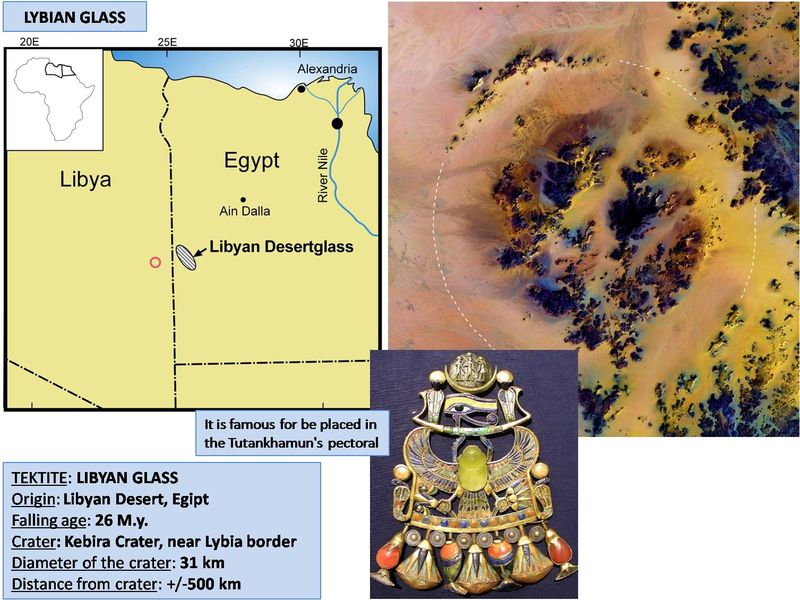
|
| Mineral: | Diagram showing origin of tectites |
| Description: |
|
| Viewed: |
14925 Time(s) |
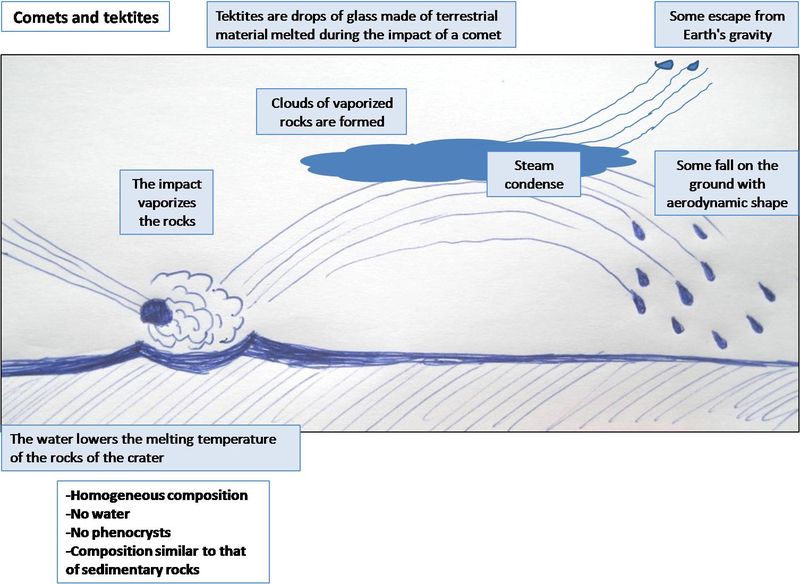
|
| Mineral: | Main Tecite Fields |
| Description: |
|
| Viewed: |
14895 Time(s) |
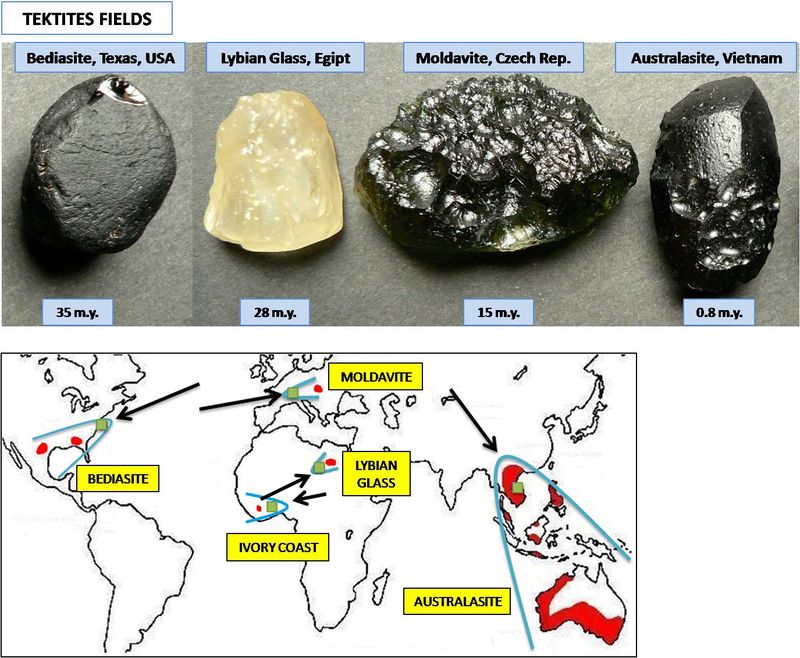
|
| Mineral: | From where comets are from |
| Description: |
|
| Viewed: |
15059 Time(s) |
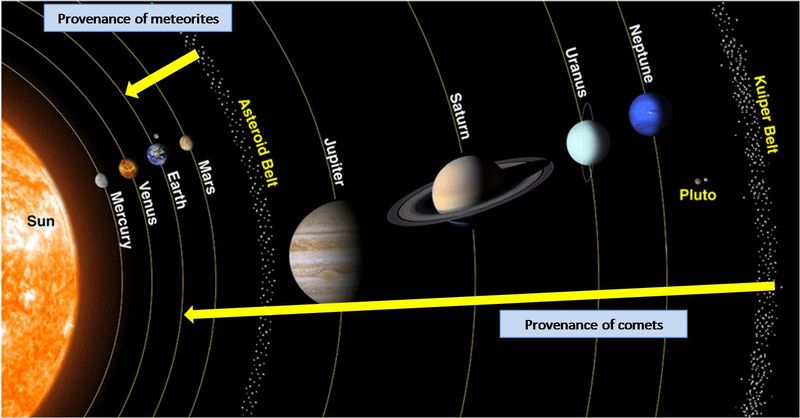
|
|
|
| Back to top |
|
 |
Roger Warin

Joined: 23 Jan 2013
Posts: 1246



|
 Posted: Dec 23, 2016 05:10 Post subject: Re: Cristobalite in Lybian Desert Glass Posted: Dec 23, 2016 05:10 Post subject: Re: Cristobalite in Lybian Desert Glass |
|
|
| Many thanks Marco.
|
|
| Back to top |
|
 |
marco campos-venuti

Joined: 09 Apr 2014
Posts: 234
Location: Sevilla



|
 Posted: Dec 23, 2016 05:32 Post subject: Re: Cristobalite in Lybian Desert Glass Posted: Dec 23, 2016 05:32 Post subject: Re: Cristobalite in Lybian Desert Glass |
|
|
Here is an interesting piece of Libyan Glass overgrown by limonite pseudo after pyrite from the Farafra Oasis, Egypt.
| Mineral: | Libyan Glass overgrown by limonite pseudo after pyrite |
| Locality: | | White Desert, Farafra Oasis, Matruh Governorate, Egypt |  |
|
| Dimensions: | 7 cm |
| Description: |
|
| Viewed: |
14895 Time(s) |
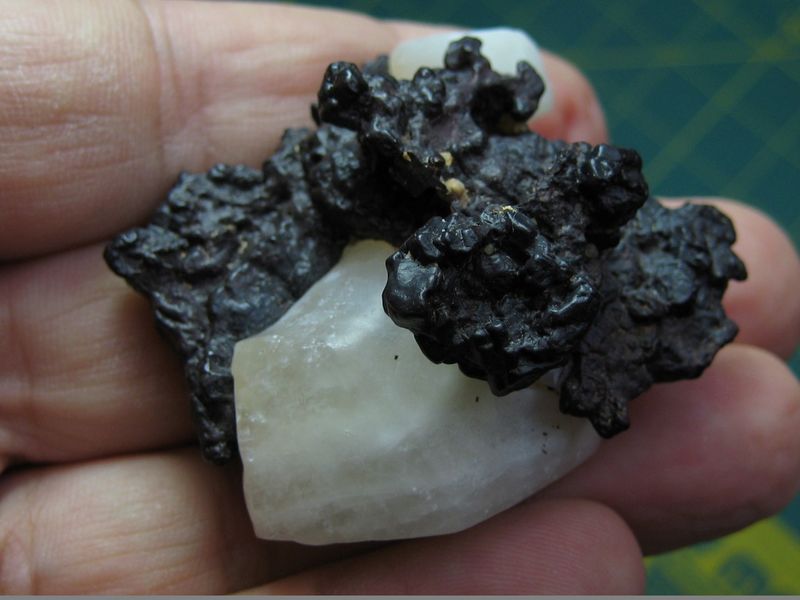
|
|
|
| Back to top |
|
 |
Roger Warin

Joined: 23 Jan 2013
Posts: 1246



|
 Posted: Dec 24, 2016 08:30 Post subject: Re: Cristobalite in Lybian Desert Glass Posted: Dec 24, 2016 08:30 Post subject: Re: Cristobalite in Lybian Desert Glass |
|
|
Hi Marco,
There are also Philippinites and the Anda type.
Finally, what is the best explanation for this texture?
Roger.
| Mineral: | Tectite |
| Locality: | | Anda Island-Municipality, Pangasinán Province, Ilocos Region, Filipinas |  |
|
| Description: |
|
| Viewed: |
14759 Time(s) |
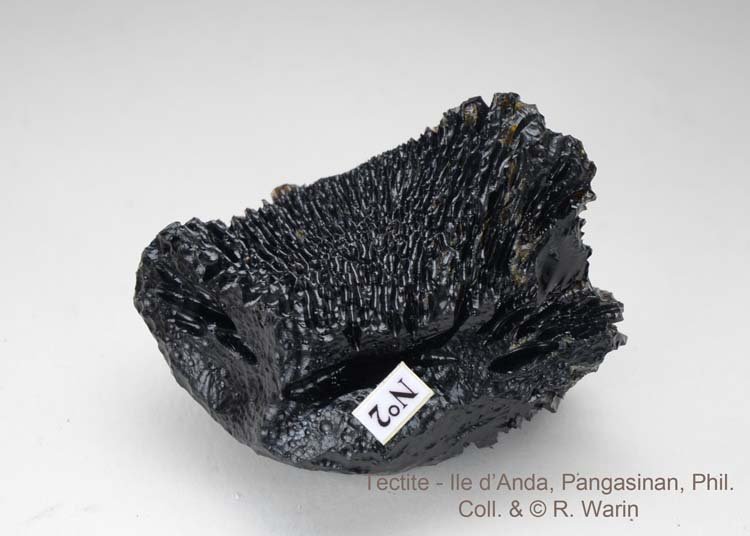
|
| Mineral: | Tectite |
| Locality: | | Cabarruyan Island, Anda Island-Municipality, Pangasinán Province, Ilocos Region, Filipinas |  |
|
| Description: |
|
| Viewed: |
14744 Time(s) |
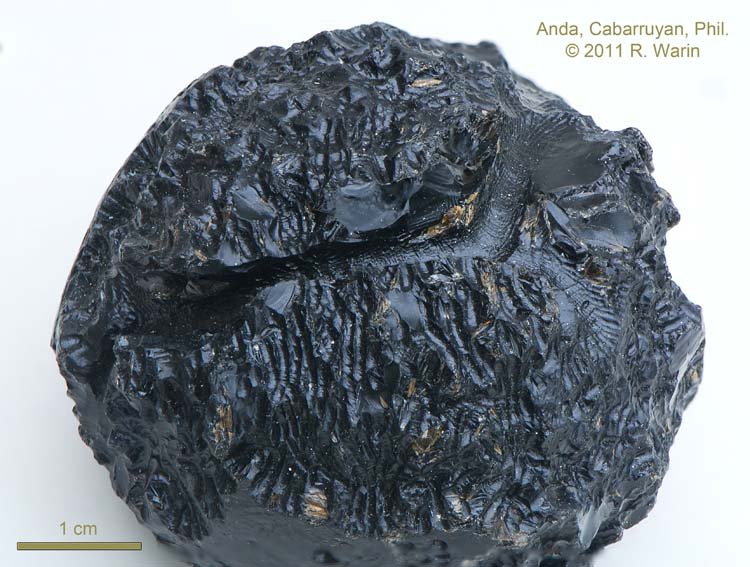
|
| Locality: | | Cabarruyan Island, Anda Island-Municipality, Pangasinán Province, Ilocos Region, Filipinas |  |
|
| Description: |
|
| Viewed: |
14747 Time(s) |
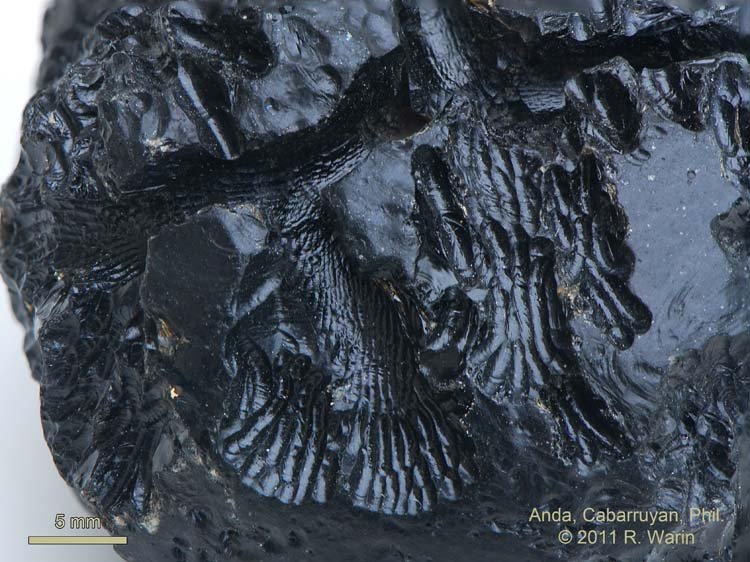
|
|
|
| Back to top |
|
 |
marco campos-venuti

Joined: 09 Apr 2014
Posts: 234
Location: Sevilla



|
 Posted: Dec 24, 2016 12:31 Post subject: Re: Cristobalite in Lybian Desert Glass Posted: Dec 24, 2016 12:31 Post subject: Re: Cristobalite in Lybian Desert Glass |
|
|
Hi,
all grooves on the surface of tectites are re-entry structures. They are formed when they fall down. Due to the lower fusion temperature compared with meteorites, grooves are deeper in tectites. Consider that they travelled for thousands of kilometers.
Philippinites and Anda are local type of the big australasian group.
|
|
| Back to top |
|
 |
alfredo
Site Admin

Joined: 30 Jan 2008
Posts: 1014



|
 Posted: Dec 24, 2016 18:55 Post subject: Re: Cristobalite in Lybian Desert Glass Posted: Dec 24, 2016 18:55 Post subject: Re: Cristobalite in Lybian Desert Glass |
|
|
| Depends in part on the climate. The grooves on moldavites are of post-flight origin, by long-term etching in acid soils. Some of that might happen with other tektites too, especially in humid countries like the Philippines. In a desert, like Australia, they are more likely to be of aerodynamic origin.
|
|
| Back to top |
|
 |
marco campos-venuti

Joined: 09 Apr 2014
Posts: 234
Location: Sevilla



|
 Posted: Dec 25, 2016 08:45 Post subject: Re: Cristobalite in Lybian Desert Glass Posted: Dec 25, 2016 08:45 Post subject: Re: Cristobalite in Lybian Desert Glass |
|
|
| Yes you are right Alfredo. Almost part of the sculpture is secondary, but follows pre-defined lines of weakness created at the time of formation of the tektite. This explains why tektite sculpture varies geographically in different areas of its strewn field. Moldavites found in ironstone nodules are much less sculptured.
|
|
| Back to top |
|
 |
|





